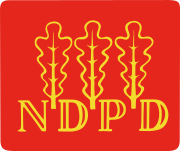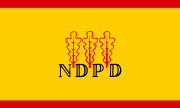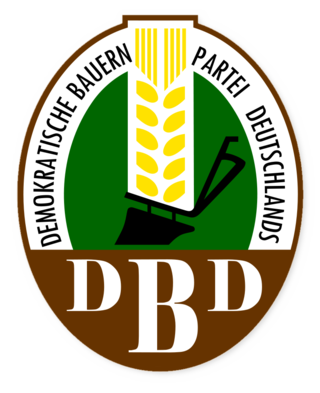
The Democratic Farmers' Party of Germany was an East German political party. The DBD was founded in 1948. It had 52 representatives in the Volkskammer, as part of the National Front. The DBD participated in all GDR cabinets. The founding of the DBD was an attempt by the SED to weaken the influence of CDU/LDPD in the rural community by establishing a party loyal to the SED. The leadership cadre came mainly from the ranks of the SED. In the late 1980s, the party had 117,000 members.

The Liberal Democratic Party of Germany was a political party in East Germany. Like the other allied bloc parties of the Socialist Unity Party of Germany (SED) in the National Front, it had 52 representatives in the People's Chamber.
The National Front of the German Democratic Republic was an alliance of political parties (Blockpartei) and mass organizations in the German Democratic Republic, controlled by the Socialist Unity Party of Germany (SED), which stood in elections to the East German parliament, the Volkskammer.
The German Democratic Republic was created as a socialist republic on 7 October 1949 and began to institute a government based on the government of the Soviet Union during the Stalin era. The equivalent of the Communist Party in East Germany was the Sozialistische Einheitspartei Deutschlands, which along with other parties, was part of the National Front of Democratic Germany. It was created in 1946 through the merger of the Communist Party of Germany (KPD) and the Social Democratic Party of Germany (SPD) in the Soviet Occupation Zone of Germany. Following German reunification, the SED was renamed the Party of Democratic Socialism (PDS), which eventually merged with the West German Electoral Alternative for Labor and Social Justice to form the modern Left Party.

The Communist Party of Germany is an anti-revisionist Marxist-Leninist communist party in Germany. It is one of several parties which claim the KPD name and/or legacy. It was founded in Berlin in 1990. The party is also commonly referred to by the name KPD-Ost to differentiate it from other parties with the same name, most prominently the historical Communist Party of Germany.

The Ulbricht Group was a group of exiled members of the Communist Party of Germany, led by Walter Ulbricht, who flew from the Soviet Union back to Germany on April 30, 1945. Composed of functionaries from the KPD and ten anti-fascist prisoners of war, their job was to seek out anti-fascist individuals and prepare the groundwork for the re-establishment of communist organizations and unions in postwar Berlin. There were two additional regional groups, the Ackermann Group in Saxony and the Sobottka Group in Mecklenburg. Many of the group's members later became high-level officials in the government of the German Democratic Republic (GDR).

The Soviet Control Commission was a monitoring and management committee established by the Soviet Union in order to oversee the leadership of the German Democratic Republic. It was active from 10 October 1949 and 20 September 1955 and it was legitimated by the Potsdam Agreement between the Allies.
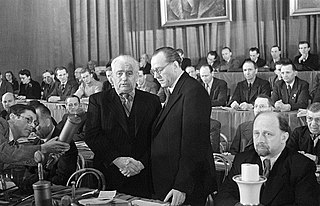
The Communist Party of Germany (KPD) and the Social Democratic Party of Germany (SPD) merged to form the Socialist Unity Party of Germany (SED) on 21 April 1946 in the territory of the Soviet occupation zone. It is considered a forced merger. In the course of the merger, about 5,000 Social Democrats who opposed it were detained and sent to labour camps and jails.
Friedrich Wehmer was a regional politician in Germany during the Weimar period and a national politician in the German Democratic Republic after the war.
Gerhard Dengler was an East German writer, print and broadcast journalist, and (briefly) newspaper editor.
Arthur Lieutenant was a German Liberal politician.
Gustav Siemon was a German politician. At a national level he was a member of the East German National legislature (Volkskammer). Regionally, he led the National Democratic Party (NPDP) in Mecklenburg.
Marlies Deneke is a German politician.

Franz Dahlem was a German politician. Dahlem was a leading official of the Communist Party of Germany (KPD) and, after 1945, of East Germany's ruling Socialist Unity Party (SED).

Friedel Apelt was a German political activist, trades union official and politician (KPD/SED). During the Nazi years she participated actively in anti-fascist resistance, and spent much of the time in prison or as a concentration camp internee. After the war she was able to resume her political career in the Soviet occupation zone.
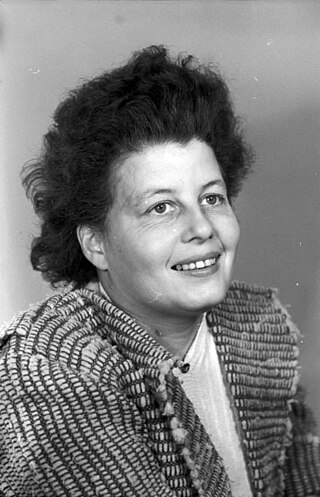
Ilse Rodenberg was a Hamburg typist who became an actress and, later, an influential East German theatre director. She combined this with a political career, sitting as a member of the East German parliament for four decades between 1950 and 1990. She was a member not of the ruling SED (party) but of the National Democratic Party of Germany, one of the smaller Block Parties which contributed a semblance of pluralism to the country's political structure.

Dietmar Keller was an East German politician (SED/PDS) who served as Minister for Culture in the Modrow government. After reunification he sat as a member of the German parliament ("Bundestag") between 1990 and 1994.
Arnold Gohr was a German clerical worker who became a trade unionist and activist. After 1945 he entered mainstream politics in East Berlin. As the Soviet occupation zone evolved into a Soviet sponsored one-party dictatorship, he never joined the ruling party, remaining instead a leading "collaborationist" member of the eastern version of the Christian Democratic Union. He became a party chairman and served between 1948 and 1958 as "deputy lord mayor" of Berlin, a period during which the increasingly divided city's constitutional status and future were contentious and ambiguous on a number of different levels.

State elections were held in the Soviet occupation zone of Germany on 20 October 1946 to elect the state legislatures of Mecklenburg-Vorpommern, Brandenburg, Saxony, Saxony-Anhalt and Thuringia. They were the only elections held in the future territory of East Germany before the establishment of the German Democratic Republic in 1949, and the only free and fair elections in that part of Germany between 1932 and the Peaceful Revolution.

Wolfgang Rauls is a German politician of the Free Democratic Party (FDP). He was the last leader of the National Democratic Party during the Wende, before its eventual merger into the Free Democratic Party. After German reunification, he entered state politics in Saxony-Anhalt, serving as Minister for the Environment and, eventually, Deputy Minister-President in the CDU cabinets from 1990 to 1994.
